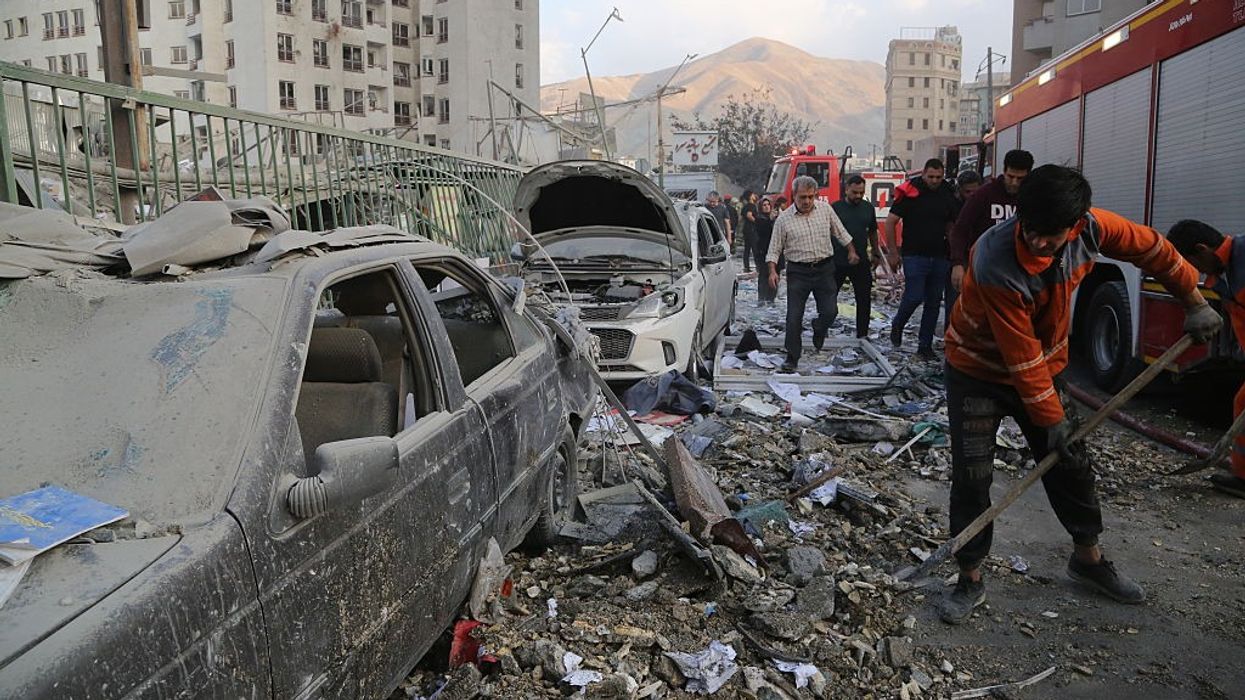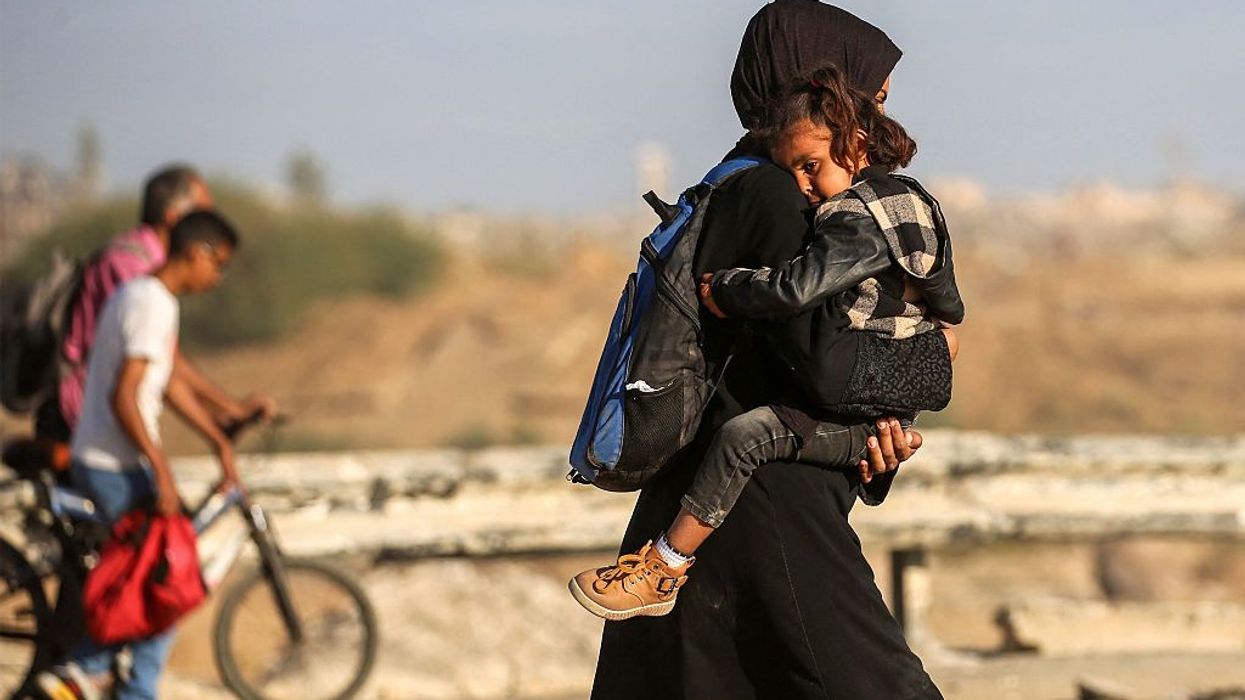Israel's Air-Power Colonialism
Like the British empire before it, Israel is attempting to dominate the Middle East from the skies.
US President Donald Trump and Israeli Prime Minister Benjamin Netanyahu’s nomination of former British Prime Minister Tony Blair, his hands already crimson with the blood of innocent Iraqis, to run post-war Gaza, brings to mind a distant era when London sent its politicians out to be viceroys in its global colonial domains. Consider Blair’s proposed appointment, made (of course!) without consulting any Palestinians, a clear signal that the Middle East has entered a second era of Western imperialism. Other than Palestine, which has already been subjected to classic settler colonialism, our current neo-imperial moment is characterized by the American use of Israel as its base in the Middle East and by the employment of air power to subdue any challengers.
Swarming
The odd assortment of grifters, oil men, financiers, mercenaries, white nationalists, and Christian and Jewish Zionists now presiding in Washington, led by that great orange-hued hotelier-in-chief, has (with the help of Germany, Great Britain, and France) built up Israel into a huge airbase with a small country attached to it. From that airbase, a constant stream of missiles, rockets, drones, and fighter jets routinely swarm out to hit regional neighbors.
Gaza was pounded into rubble almost hourly for the last two years, only the first month of which could plausibly have been justified as “self-defense” in the wake of the horrific Hamas attack on Israel on October 7, 2023. Even the Palestinian West Bank, already under Israeli military rule, has been struck repeatedly from above. Lebanon has been subject to numerous bombings despite a supposed ceasefire, as has Syria (no matter that its leader claims he wants good relations with his neighbor). Yemen, which has indeed fired missiles at Israel to protest the genocide in Gaza, has now been hit endlessly by the Israelis, who also struck Iranian nuclear enrichment sites and other targets last June.
Some of the Israeli bombing raids or missile and drone strikes were indeed tit-for-tat replies to attacks by that country’s enemies. Others were only made necessary because of Israeli provocations, including its seemingly never-ending atrocities in Gaza, to which regional actors have felt compelled to reply. Many Israeli strikes, however, have had little, if anything, to do with self-defense, often being aimed at civilian targets or at places like Syria that pose no immediate threat. On September 9, Israel even bombed Qatar, the country its leaders had asked to help negotiate with Hamas for the return of Israeli hostages taken on October 7.
Tel Aviv is now shaping governments of the Middle East simply by wiping their officials off the face of the Earth or credibly threatening to do so.
In short, what we’re now seeing is Israel’s version of air-power colonialism.
Typically, its fighter jets bombed the Yemeni capital of Sanaa on August 28, assassinating northern Yemen’s prime minister, Ahmed al-Rahwi, along with several senior members of the region’s Houthi government and numerous journalists. (Israeli officials had previously boasted that they could have killed the top leadership of Iran in their 12-day war on that country in June.)
In reality, Tel Aviv is now shaping governments of the Middle East simply by wiping their officials off the face of the Earth or credibly threatening to do so. Israel has also had an eerie hand in shaping outside perceptions of developments in the region by regularly assassinating journalists, not only in Palestine but also in Lebanon and as far abroad as Yemen. However, by failing to come close to subduing the region entirely, what Tel Aviv has created is a negative version of hegemony rather than grasping any kind of positive leadership role.
Negative Imperialism
The massive June bombardment of Iran by Israel and the United States, destroying civilian nuclear enrichment facilities at Natanz and Fordow, came amid ongoing diplomatic negotiations in Oman. As a signatory to the Nuclear Non-Proliferation Treaty, Iran has the right to enrich uranium for civilian uses and no credible evidence was presented that Tehran had decided to militarize its program. The International Atomic Energy Agency (IAEA) condemned both sets of strikes as severe violations of the United Nations charter and of its own statutes. They also posed public health concerns, mainly because of the release of potentially toxic chemicals and radiological contaminants.
Those attacks, in short, were aimed at denying Iran the sort of economic and scientific enterprises that are a routine part of life in Israel and the United States, as well as Brazil, China, France, Germany, India, Japan, the Netherlands, Pakistan, Russia, and the United Kingdom. Several of those countries (like Israel) do, of course, also have nuclear weapons, while Iran does not. In the end, Tehran saw no benefit in the 2015 nuclear deal its leaders had agreed to that required it to mothball 80% of its civilian nuclear enrichment program. Indeed, President Trump functionally punished the Iranian leadership for complying with it when he imposed maximum-pressure sanctions in May 2018—sanctions largely maintained by the Biden administration and in place to this day.
Those dangerous and illegal air strikes on Iran should bring to mind 19th-century British and Russian resistance to the building of a railroad by Iran’s Qajar dynasty, a form of what I’ve come to think of as “negative imperialism.” In other words, contrary to classic theories of imperialism that focused on the domination of markets and the extraction of resources, some imperial strategies have always been aimed at preventing the operation of markets in order to keep a victim nation weak.
After all, Iran has few navigable waterways and its economy has long suffered from transportation difficulties. The obvious solution once upon a time was to build a railroad, something both the British and the Russians came to oppose out of a desire to keep that country a weak buffer zone between their empires. Iran didn’t, in fact, get such a railroad until 1938.
In a similar fashion, 21st-century imperialism-from-the-air is denying it the ability to produce fuel for its nuclear power plant at Bushehr. The United States, Europe, and Israel are treating Iran differently from so many other countries in this regard because of its government’s rejection of a Western-imposed imperial order in the region.
Popular movements and revolts brought the long decades of British and French colonial dominance of the Middle East to an end after World War II. The demise of colonialism and the rise of independent nation-states was, however, never truly accepted by right-wing politicians in either Europe or the United States who had no interest in confronting the horrors of the colonial age. Instead, they preferred to ignore history, including the slave trade, economic looting, the displacement or massacre of Indigenous populations, the mismanagement of famines, and forms of racist apartheid. Worse yet, the desire for a sanitized history of the colonial era was often coupled with a determination to run the entire deadly experiment all over again.
The framers of the ill-omened Global War on Terror’s nightmares in Afghanistan and Iraq during the administration of President George W. Bush would openly celebrate what was functionally the return of Western colonialism. They attempted to use America’s moment as a hyperpower (unconstrained by great power competition after the fall of the Soviet Union in 1991) to attempt to recolonize the Greater Middle East.
Predictably, they failed miserably. Unlike their 19th-century ancestors, people in the Global South are now largely urban and literate, connected by newspapers and the internet, organized by political parties and nongovernmental outfits, and in possession of capital, resources, and sophisticated weaponry. Direct colonization could now only be achieved through truly genocidal acts, as Israeli actions in Gaza suggest—and, even then, would be unlikely to succeed.
“We Destroyed the Villages by Air Patrols”
No wonder imperial powers have once again turned to indirect dominance through aerial bombardment. The use of air power to try to subdue or at least curb Middle Easterners is, in fact, more than a century old. That tactic was inaugurated by the government of Italian Prime Minister Giovanni Giolitti during his country’s invasion and occupation of Ottoman Libya in 1911. Aerial surveillance pilot Lieutenant Giulio Gavotti fitted detonators to two-pound grenades, dropping them on enemy camps. Though he caused no injuries, his act, then seen as sneaky and ungentlemanly, provoked outrage.
The ruthless British subjugation of Palestine, aimed at—this should sound eerily familiar today—displacing the Indigenous population and establishing a European “Jewish Ulster” there to bolster British rule in the Middle East, also deployed air power. As Irish parliamentarian Chris Hazzard observed, “Herbert Samuel, hated in Ireland for sanctioning Roger Casement’s execution and the internment of thousands following the Easter Rising in 1916—would, as Britain’s first High Commissioner in Palestine, order the indiscriminate aerial bombardment of Palestinian protestors in 1921 (the first bombs dropped from the sky on Palestinian civilians).”
The most extensive use of aerial bombardment for imperial control, however, would be pursued by the British in Mesopotamia, which they derogatorily called “Mespot.” The fragile British occupation of what is now Iraq from 1917 to 1932 ended long before imperialists like then-Secretary of State for War, Air, and the Colonies Winston Churchill thought it should, largely because the armed local population mounted a vigorous resistance to it. A war-weary British public proved unwilling to bear the costs of a large occupation army there in the 1920s, so Churchill decided to use the Royal Air Force to keep control.
Unlike genuine international leadership, the Frankenstein monster of negative hegemony in the Middle East stirs only opposition and resistance.
Arthur “Bomber” Harris, a settler in colonial Rhodesia, who joined the British Air Force during the first World War, was then sent to Iraq. As he wrote, “We were equipped with Vickers Venon and subsequently Victoria aircraft… By sawing a sighting hole in the nose of our troop carriers and making our own bomb racks we converted them into what were nearly the first post-war long-range heavy bombers.” He did not attempt to gild the lily about his tactics: “[I]f the rebellion continued, we destroyed the villages and by air patrols kept the insurgents away from their homes for as long as necessary.” That, as he explained, was far less expensive than using troops and, of course, produced no high infantry casualty counts of the sort that had scarred Europe’s conscience during World War I.
Colonial officials obscured the fact that such measures were being taken against a civilian population in peacetime, rather than enemy soldiers during a war. In short, the denial that there are any civilians in Palestine, or in the Middle East more generally, has a long colonial heritage. It should be noted, however, that, in the end, Great Britain’s aerial dominance of Iraq failed, and it finally had to grant that country what at least passed for independence in 1932. In 1958, an enraged public would finally violently overthrow the government the British had installed there, after which Iraq became a nationalist challenger to Western dominance in the region for decades to come.
Of course, Harris’ air power strategy, whetted in Mesopotamia, came to haunt Europe itself during the Second World War, when he emerged as commander-in-chief of Bomber Command and rose to the rank of air chief marshal. He would then pioneer the tactic of massively bombarding civilian cities, beginning with the “thousand bomber” raid on Cologne in May 1942. His “total war” air campaign would, of course, culminate in the notorious 1945 firebombing of Dresden, which devastated eight square miles of the “Florence of Germany,” wiping out at least 25,000 victims, most of them noncombatants.
Terror from the Skies
In the end, the way Bomber Harris’ deadly skies came home to Europe should be an object lesson to our own neo-imperialists. At this very moment, in fact, Europe faces menacing drones no less than does the Middle East. Moreover, unlike genuine international leadership, the Frankenstein monster of negative hegemony in the Middle East stirs only opposition and resistance. Despite Israel’s technological superiority, it has hardly achieved invulnerability. Poverty-stricken and war-ridden Yemen has, for instance, managed to all but close the vital Red Sea to international shipping to protest the genocide in Gaza and has hit Israel with hypersonic missiles, closing the port of Eilat. Nor, during their 12-day war, did Iran prove entirely helpless either. It took out Israel’s major oil refinery and struck key military and research facilities. Instead of shaking the Iranian government, Israel appears to have pushed Iranians to rally around the flag. Nor is it even clear that Iran’s stockpile of highly enriched uranium was affected.
Most damning of all, Israel’s ability to inflict atrocities on the Palestinians of Gaza (often with US-supplied weaponry) has produced widespread revulsion. It is now increasingly isolated, its prime minister unable even to fly over France and Spain due to a fear of an International Criminal Court warrant for his arrest. The publics of the Middle East are boiling with anger, as are many Europeans. In early October, Italy’s major labor unions called a general strike, essentially closing the country down to protest Israel’s interception of the Global Sumud Flotilla, a group of ships attempting to bring humanitarian aid to Gaza. As with Bomber Harris’ ill-starred domination of Iraq, terror from the skies in Gaza and beyond is all too likely to fail as a long-term Grand Strategy.


